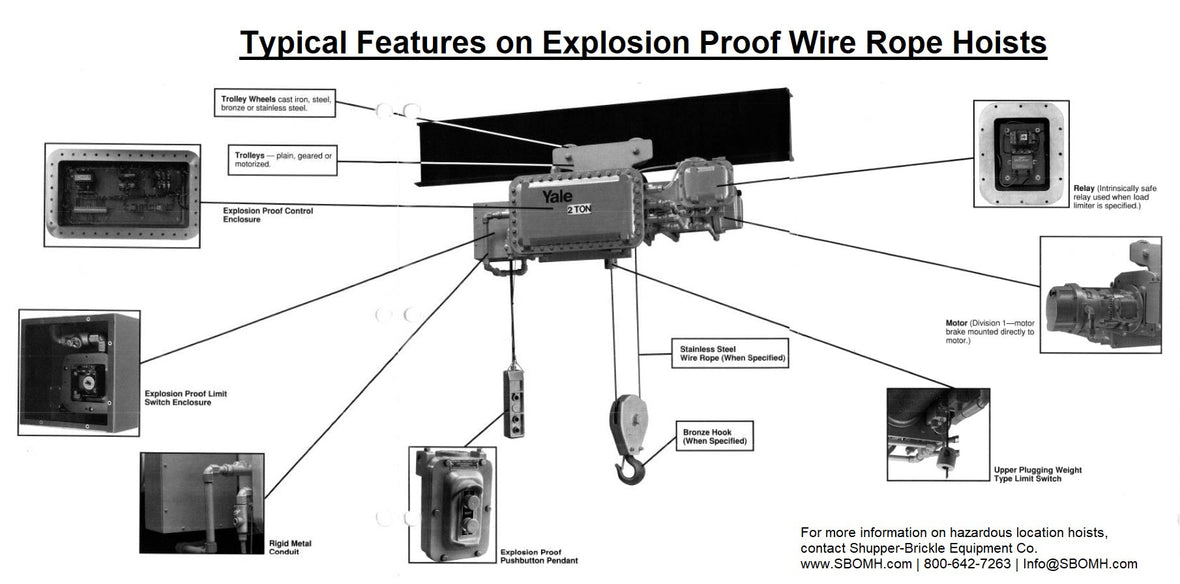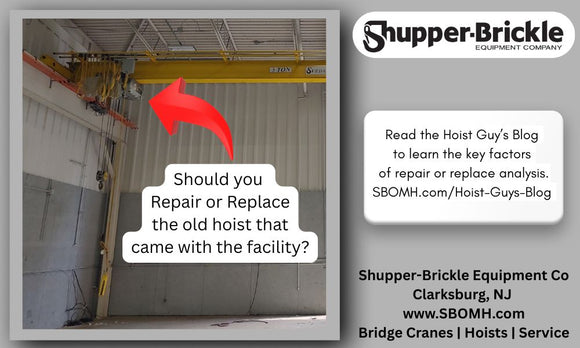
Buyer’s Guide for Purchasing Explosion Proof Hoists, Trolleys and Bridge Cranes
Andrew T. Litecky
Welcome to the Hoist Guy’s Blog, where our resident hoist guy, Andrew T. Litecky, shares his buying tips for purchasing explosion proof hoists, trolley and bridge cranes.
Does your specification call for an electric-powered explosion proof hoist, trolley or overhead crane? Understanding some key points about hazardous locations, explosion proof hoists and spark resistant components will help you to get the right electrically powered lifting equipment for the job.
Not All Hazardous Locations Are Equal
First, you must know how your work area is classified. In the US, hazardous locations are defined by the National Electric Code, and electrical devices are on hoists, motor driven trolleys and motor driven bridge cranes are also defined by the NEC. Once you know the NEC hazardous classification of your site, then you can look for equipment designed for that class. For example, if your site is considered Class 1, Division 2, Groups C & D, then your hoisting equipment must meet those requirements.
What makes an electrical hoist explosion proof?
Different dedicated components work together to make an electric hoist compliant to a hazardous location.
Hoist Design
First, each electrical device within the hoist must be designed and nameplated for that hazardous location. A hoist motor with a motor brake or a trolley motor with a motor brake must specifically state: Class 1, Groups C & D, Division 2 on the nameplate. Limit switches can be nameplated NEMA 7/9, which complies with Class 1 and Class 2 hazardous locations. Control enclosures are made from cast aluminum, and they’re designed to contain an explosion. Meanwhile, all electrical components are connected by rigid conduit and seal fittings to further protect and contain the electricity.
Reduced Voltage
In some hoisting equipment, a barrier relay reduces the voltage in standard electrical devices to where the arc generated by electricity is so low, an explosion cannot occur. These are known as “intrinsically” safe devices. They’re typically used with standard pendants, limit switches and overload devices.
Heat Dissipation
Finally, since heat is a critical factor in many hazardous atmospheres, specialized motors and brakes are designed to dissipate heat before dangerous temperatures are reached. Thermostats may be used to prevent further operation of equipment that is in danger of overheating.
Spark Resistant Hoists and Trolleys
The NEC is concerned with electrical features and does not define mechanical features, however, “spark resistant” mechanical features can be of critical importance. Each hazardous location must be evaluated for the chances of an explosion should a spark be generated between metal parts. In this case, spark resistance might be specified on manual and air-powered lifting equipment as well as electric hoist and trolley models.
Where can sparks occur in the operation of hoists and overhead cranes?
This chart provides a list of the hoist and crane parts where sparking may occur under certain circumstances and where spark resistant components may be provided:
Standard Components Prone to Sparks |
Spark Resistant Alternative |
| Trolley and bridge wheels | Bronze or stainless-steel wheels |
| Hoisting chain or cable | Stainless-steel chain or cable |
| Load hook | Bronze or stainless-steel: either just the load hook or a complete bottom block |
| Hand chain on manual hoists and hand geared trolleys | Hand chain made from aluminum, bronze or stainless-steel |
While the actual spark resistant material offered varies with each hoist and crane manufacturer, no certification can be made that these features are absolutely “spark proof.” However, the specification of spark resistance provides a key safety measure for hoists, cranes and trolleys used in hazardous environments.
Purchasing Explosion Proof Hoisting Equipment
Decisions about purchasing explosion-proof and spark resistance hoisting equipment must be based on risk and never on cost. Where spark resistant features are required and not provided, the possibility of a catastrophic event, like a plant explosion, exists to a high degree.
With over fifty years in the lifting business, we know explosion-proof hoists. Contact us for more information on overhead material handling equipment for hazardous locations.


